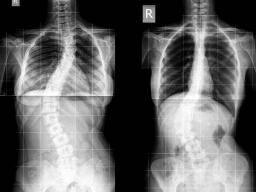Scoliosis may be defined as one of three types – idiopathic, congenital and neuromuscular. Congenital birth defects imply that there are increasing curvature of the spine as a person grows. For example, an abnormal spine or vertebrae with very little separation between each other could possibly cause congenital scoliosis.
Neuromuscular scoliosis is triggered by other medical conditions that can affect the spine. muscular dystrophy, amyotrophic lateral sclerosis and spinal bifida are examples of conditions that can cause neuromuscular scoliosis. You can get to know about scoliosis clinic in Malaysia via https://hiyh.info/en_MY/scoliosis-treatment/.

Image Source: Google
Idiopathic scoliosis is when the cause is unknown. Incidentally, it is the most common type, as the main cause of scoliosis is not fully understood. It is characterized as infantile, juvenile or adolescent, depending on what happens on the stage of human development.
Genetic background is accepted as a risk factor is most famous for scoliosis tends to run in families. It has also been theorized that the presence of ether in the bloodstream of the father during pregnancy can trigger this idiopathic scoliosis.
minor cases of scoliosis may not need treatment at all. However, it is important to have a doctor check the progress of the spinal curvature at least twice a year to see if it is getting worse. Those with moderate scoliosis can be equipped with a special clamp around the body. these braces is limited to only prevent the spine from curving worse. They can not reverse the effects of scoliosis.
Scoliosis surgery is the last and most aggressive methods to get rid of a very large curvature of the spine.